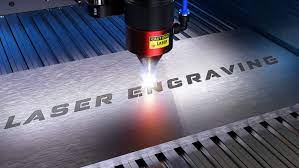What is laser engraving, and how does it work? Laser engraving is a method of turning materials into vapours to create permanent, deep scars. The laser beam acts like a chisel, cutting through the material by removing layers from its surface. The goal is to create a lot of heat with the laser, which is then used to vaporise the substance.
In this post, you’ll find comprehensive information (provided by The Engraving People) on how laser engraving works and where to locate a laser engraving machine.
Is It Better to Use Laser Engraving or Laser Etching?
You should consider three factors when selecting the best laser marking technique:
- Its legibility under adverse conditions: its ability to be readable despite difficult circumstances
- The speed of the laser: the time between markings that prevents production bottlenecks
- The substance to be marked: its suitability with the marking technique
It’s not uncommon to see laser engraving used on steel or aluminum (including anodized and die-casting aluminum) workpieces that will be subjected to a variety of wear or surface treatments. Metal carving is compatible with steel and aluminum (including anodized and die-casting aluminum).
The most intriguing aspect of this method is that it may engrave 2D barcodes that are still readable after post-processing treatments. Shotblasting, e-coating, and heat treatment are only a few of the many methods available to handle the most difficult traceability concerns.
However, if engraving the most durable identifiers isn’t necessary, laser etching is typically preferred since it’s a high-speed technique that doesn’t require as much ablation.
You can laser etch a greater range of materials, such as steel, aluminum, anodized aluminum, lead, magnesium, and zinc.
There are also several techniques for marking stainless steel, one of which is laser annealing.
From Solid to Gas: How It Works
The transformation of a substance’s roughness by laser etching is known as sublimation, whereas melting the material’s surface creates fissures in the surface. The surface absorbs enough energy in milliseconds to go from solid to gas to liquid without ever becoming a liquid.
To counter this, the laser engraving equipment must be powerful enough to melt the surface of the material in milliseconds. Laser engravers are highly efficient because they operate at such high temperatures for sublimation.
When liquids reach the boiling point, they release vapors. Because of this, when you acquire a laser system, it should always include a fume extraction system and an air knife to safeguard the workers’ health and the laser’s lens.
Because they produce a wavelength that interacts well with metals, fiber lasers are the ideal engraving instruments.
Find a Laser Engraving Machine
If you’re looking for a laser engraving machine, this list will help you find the right laser:
- To build your own custom solutions or collaborate with an integrator, fibre lasers and CO2 lasers are among the laser systems available.
- Integrated laser machines offer turnkey automated or semi-automated laser solutions.
As you can see, the type of machine you need will depend on the job at hand. Instead, it’s always advised to seek help from a professional to do the job (safely!) for you.
